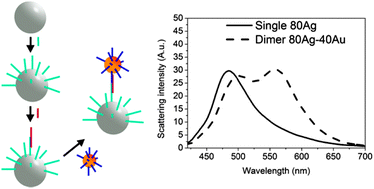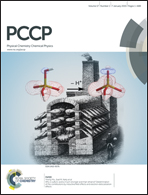Enhancing spectral shifts of plasmon-coupled noble metal nanoparticles for sensing applications†
Abstract
Noble metal nanoparticles possess very large scattering cross-sections, which make them useful as tags in biosensing assays with the potential to detect even single binding events. In this study, we investigated the effects of nanoparticle size on the shift in the light scattering spectrum following formation of Au–Au, Ag–Ag or Ag–Au dimers using FDTD simulations. We discuss the use of a color camera to detect these spectral changes for application in a target-induced dimerization sensing assay. Dimerization of Au nanoparticles induced a larger shift in color compared to Ag nanoparticles. Heterodimers composed of 60 nm Ag and 40 nm Au demonstrated an even larger spectral shift and color response compared to the best homodimer pair (80–40 nm Au). The increased spectral shift of the Ag–Au heterodimer was subsequently observed experimentally for the DNA-induced dimerization of nanoparticles, showing that careful selection of nanoparticle size and composition can significantly enhance recognition of nanoparticle dimerization events for use in (color) sensing assays.


 Please wait while we load your content...
Please wait while we load your content...